Three Women Artists Who Enable Art by Family Member
Have you lot heard of Jackson Pollock? How virtually Willem de Kooning? Or John Bratby?
And take you heard of Lee Krasner? How well-nigh Elaine de Kooning? Or Jean Cooke?
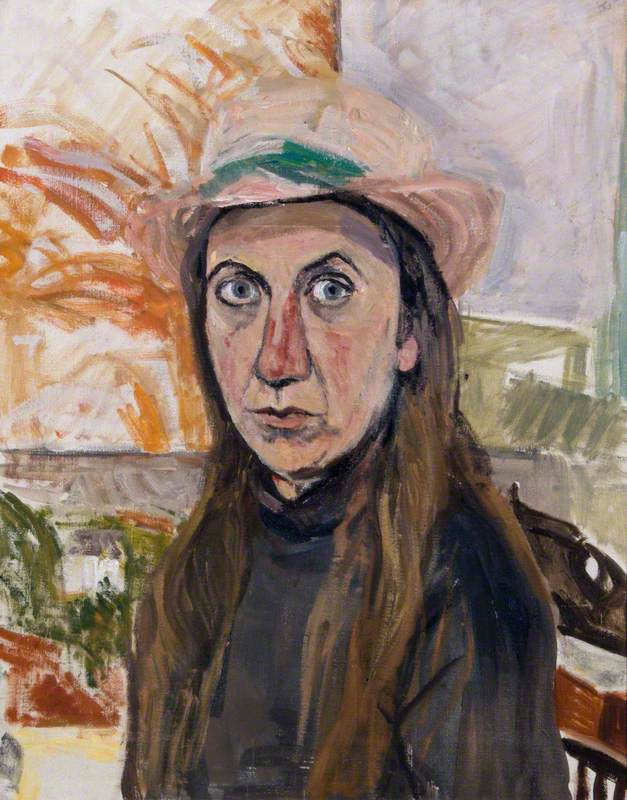
17th November 2017 marked the centenary of Auguste Rodin's death. As part of the celebration of the artist BBC Arts looked at how Camille Claudel, for a long time thought of simply as Rodin'due south muse and mistress, was a talented sculptor in her own right.
Camille Claudel is not, sadly, an exception: fine art history is full of women whose work has been obscured or belittled in the context of their male person partners. The men have romped abode with the accolades, the adoring critics and the household-name status, while women have had to push, shove and pray for their inclusion.
In a (minor) attempt to redress the residuum, here are three women artists who deserve to be brought out of their partners' shadows.
Lee Krasner
Lee Krasner was an creative person working in New York from the 1940s through to the 1970s. She was a part of the Abstract Expressionist motion, though she remained slightly distanced from its core.
In 1949, Krasner and her hubby – you lot may take heard of him – Jackson Pollock exhibited their works together, at a show called 'Artists: Man and Wife'. An Art News reviewer, Gretchen T. Munsun, wrote: 'There is a tendency amidst some of these wives to "tidy upwardly" their husbands' styles. Lee Krasner (Mrs Jackson Pollock) takes her husband's pigment and enamels and changes his unrestrained, sweeping lines into neat trivial squares and triangles.'
It was in an surround of such comments and prejudices that Krasner spent her whole working life. Her career was largely subsumed past Pollock's and the masculine earth of Abstract Expressionism; a globe she was a role of, but as Pollock's married woman, rather than equally herself. 'There were the artists and then at that place were the "dames",' Krasner said of the New York art scene. 'I was considered a "dame" even if I was a painter too.'
Krasner was instrumental in making Pollock a part of the New York art scene. In Gail Levin's biography, she chronicles how Clement Greenberg (an influential critic) would turn to Krasner for 'intellectual, wide-ranging conversations nearly art' – but in the printing wrote exclusively about Pollock'southward work, ignoring Krasner's entirely.
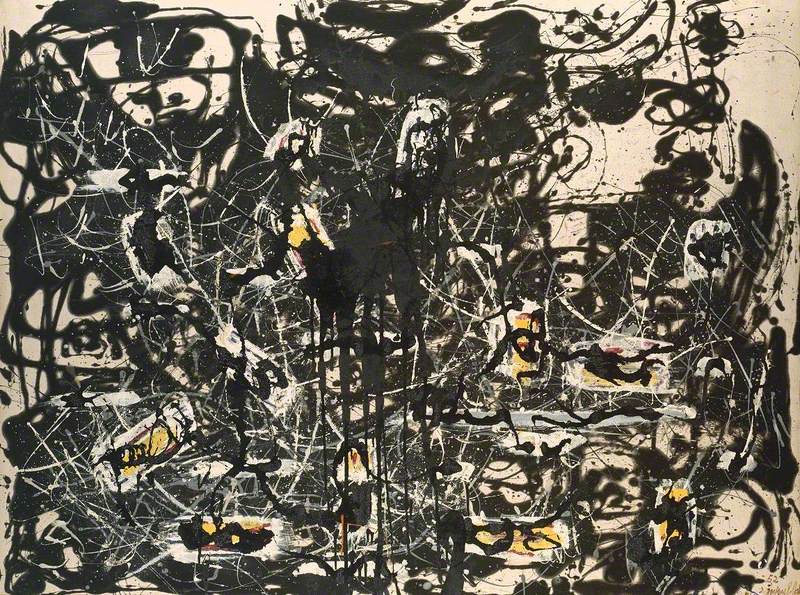
After Pollock'due south death, Krasner found new artistic expression, and many critics argue this is when she produced some of her best work – including Gothic Landscape, made in 1961. Yet she continued to be identified more with Pollock's piece of work than her own.
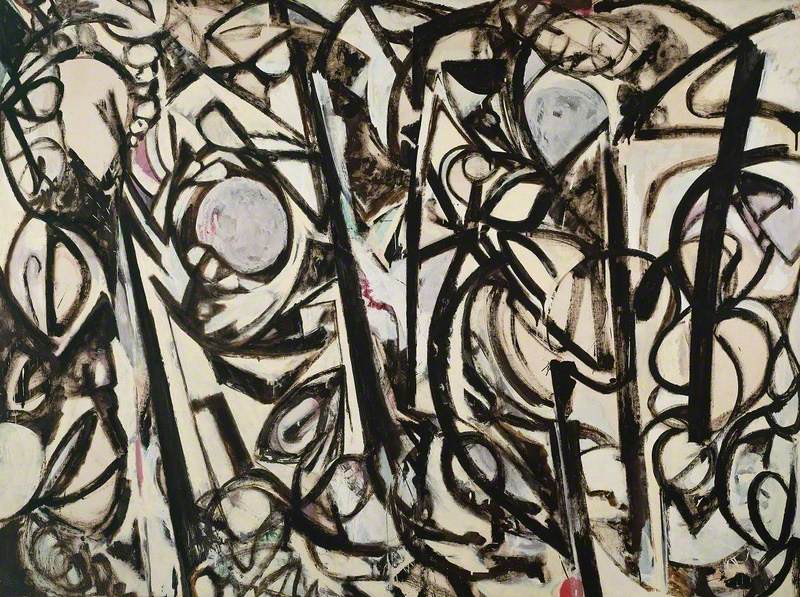
Krasner herself hasn't been forgotten. Her works are owned by major collections and fetch high prices at auction. A 1978 exhibition placed Krasner'due south works aslope those of Pollock and Marker Rothko, and a 1981 show titled 'Krasner/Pollock: A Working Relationship' showed how the 2 artists had influenced each other. Despite all of this, she will never be a household proper name in the way Jackson Pollock is. Ironically, his status today is partly attributable to her efforts to preserve his legacy – Krasner was ever convinced of his genius and, subsequently his death, placed his works in the Metropolitan Museum of Fine art, the Museum of Modern Art and the Pompidou Centre. In 2019 her work was the subject of an exhibition at the Barbican in London.
Jean Cooke
John Bratby is remembered as being at the forefront of the mail-war 'kitchen sink' move in U.k., depicting life in its messy or gloomy entirety. In 2016, Bratby was the subject field of a retrospective, 'Everything but the Kitchen Sink' at the Jerwood Gallery.
Jean Cooke, Bratby'southward wife, has never had a retrospective, despite many critics' view that she is as talented as – or more than talented than – her hubby.
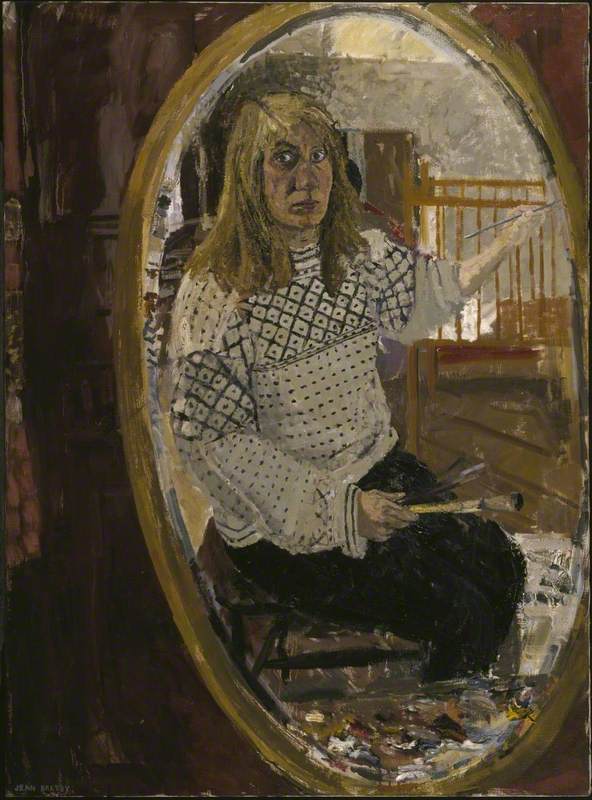
It seems Bratby recognised this; he forced Jean to offset signing her paintings with 'Cooke' (she had previously signed them 'Jean Bratby') when he became besides jealous of her success and talent: every bit put in The Times's obituary: 'he feared and resented the competition she offered to his reputation equally the one and merely painting Bratby'. Bratby as well limited the corporeality Cooke was 'allowed' to make art, and he would paint over her canvases carelessly when he needed one for himself. Sometimes he would slash at her canvases when he was 'displeased'.
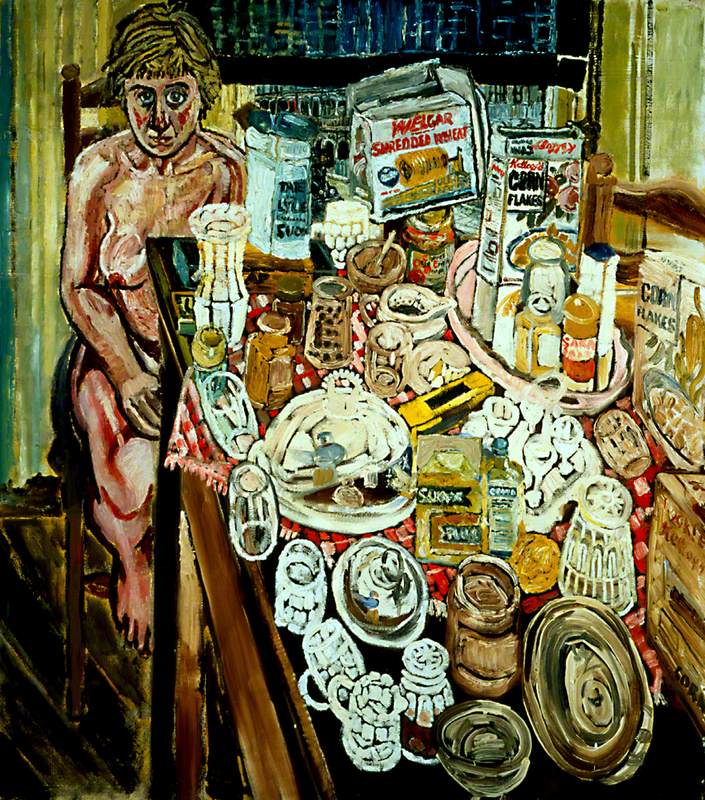
The 120-strong collection of John Bratby's works on Fine art UK is full of women: Janet, Anne, Aphrodite, Gloria, Patti, Josephine. When he does paint Jean, she appears diminished, sometimes sheepish, as in Jean and Withal Life in front of a Window. These images are in stark contrast to the mode Cooke painted herself: her self-portraits are weird, funny, interesting, and in Cooke's own words – 'mad'.
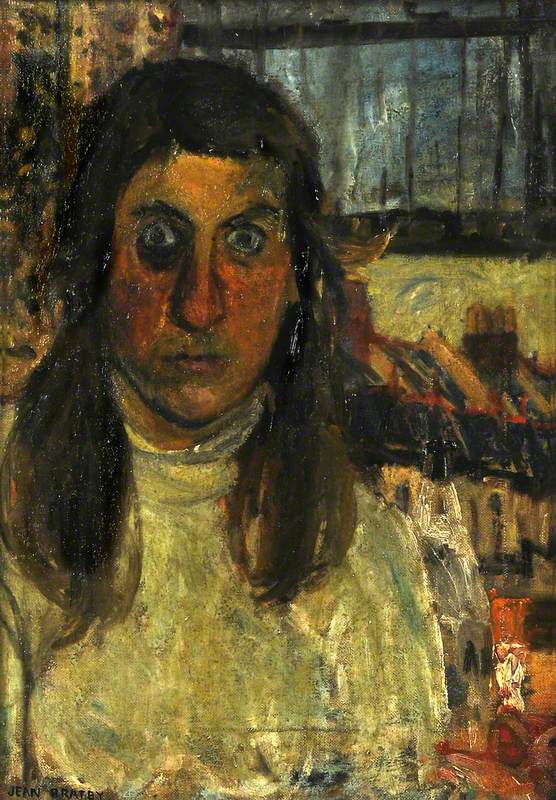
The Guardian'due south obituary for Cooke describes her fine art: 'There is a disquietingly subtle immediacy and intense sensitivity to nuances of colour in her work, which puts the viewer in heed of other notable women artists – such as Paula Modersohn-Becker and Gwen John – who similarly had to struggle to find their own voice in the face of the formidable egos of close male artistic relatives or spouses.'
Bratby's work divides opinion. He was the recipient of attention and praise when he starting time started getting noticed, perhaps due to the disruption he created to the art earth. Jean Cooke lived and painted in his shadow, and information technology is a sign of her prodigious output that she is remembered at all, her work surviving against all the odds.
Elaine de Kooning
Elaine de Kooning, born Elaine Fried, moved to Manhattan in the 1930s, took lessons at the Leonardo da Vinci schoolhouse, and afterward met, took classes from, and cruel in dearest with, a young immigrant artist named Willem de Kooning.
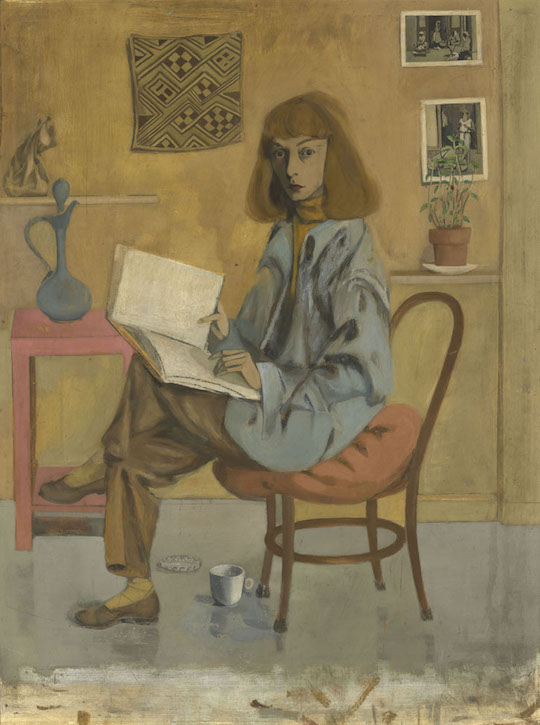
Self Portrait
1946, oil on masonite by Elaine de Kooning (1918–1989)
Elaine was equally much a part of the mail-war New York art scene as Willem, though she remained more focussed on people and portraiture than pure Abstruse Expressionism. She developed the power, in her paintings, to capture the essence of a person through their figure alone. In her later work, she blurred faces entirely, wanting instead to capture an individual's indefinable essence.
Elaine was personally called by John F. Kennedy to paint his portrait, and she created a series of huge, bright canvases depicting the president. Some of these now live in the Truman and Kennedy presidential libraries; pictured beneath is Elaine with former president Truman and one of the canvases. Elaine worked speedily, in broad brushstrokes, racing up and down ladders and across her studio during the procedure, a restless painter for a restless president. She recounted the process in particular in a fascinating interview with Artnews.

Former President Harry Due south. Truman and Elaine de Kooning
In 2015, the National Portrait Gallery in Washington, DC, held a retrospective of Elaine's work (though the manager said it was a 'huge risk' given how lilliputian-known she was). Many of her paintings are endemic by major American institutions. But information technology'due south safe to say that she volition never have the same impact or name recognition as her married man. Willem will always be the default de Kooning.
The last word will go to the indomitable Linda Nochlin, who sadly passed away recently. Writing in Women Artists at the Millennium she said: We will need all our wit and courage to make sure that women's voices are heard, their work seen and written nearly.'
Molly Tresadern, Art UK Content Creator and Marketer
Did you know?
- In 2016 we looked at women artists who deserve greater recognition – including Margaret Macdonald Mackintosh, who worked with her hubby, the architect Charles Rennie Mackintosh
- It's not just husbands that are the problem: in her lifetime, Gwen John was overshadowed by her brother, Augustus Edwin John
- In 1971, Linda Nochlin wrote the essay 'Why Have At that place Been No Great Women Artists?'
- Nochlin was a pioneering feminist art historian who helped to re-evaluate the history of art and drew attention to disregarded women artists. Y'all can read her obituary in theGuardian
More than stories
Artworks
Source: https://artuk.org/discover/stories/the-women-artists-obscured-by-their-husbands
0 Response to "Three Women Artists Who Enable Art by Family Member"
Post a Comment